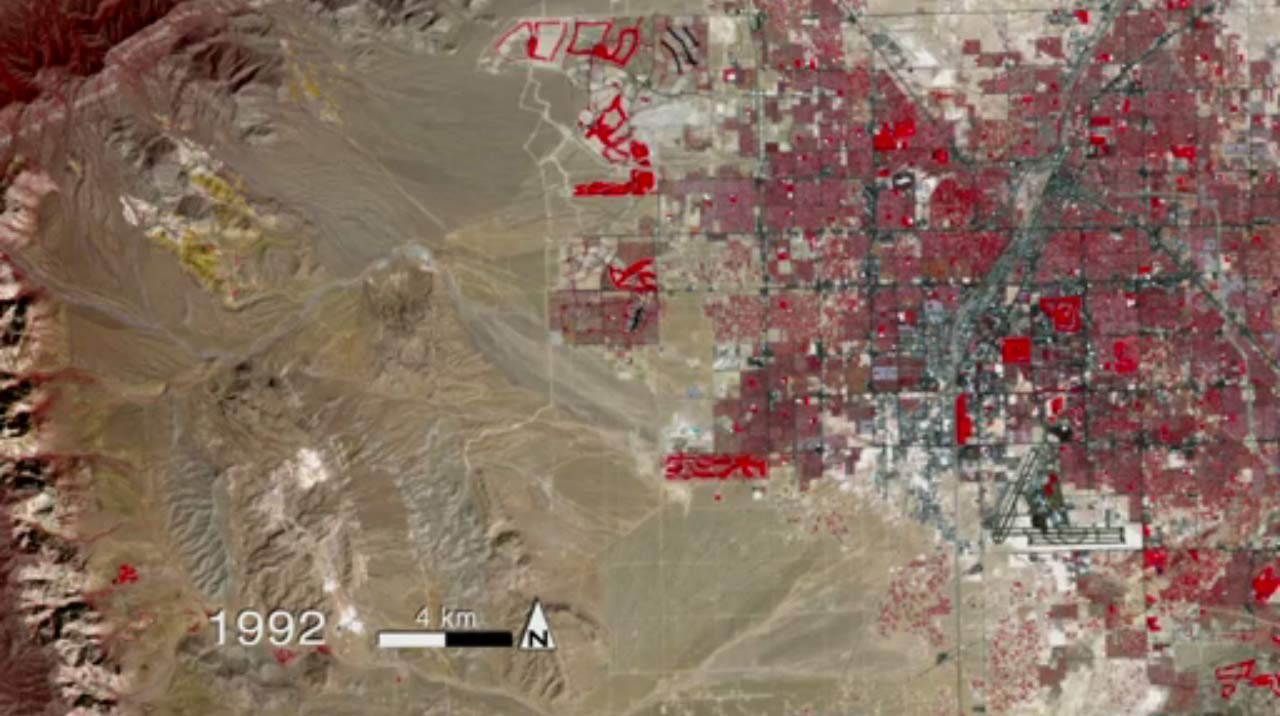
Las Vegas' Sprawling Growth Seen from Space

What happens in Las Vegas might stay in Vegas, but the Nevada city itself has been anything but static over the years. In a series of images, a fleet of Earth-watching satellites captured the gambling hub's incredible 40-year growth spurt from space.
The series of satellite images were compiled into a video by scientists at NASA's Goddard Space Flight Center in Greenbelt, Md., to show how Las Vegas has sprawled across the desertover the course of four decades. The time-lapse view offers an intriguing glimpse into what urban sprawl looks like from space.
The false-color images represent 40 years of data from the Landsat satellites. The large red areas in the images actually represent green space — primarily golf courses and city parks.
The quality of the images also becomes significantly sharper beginning in 1984, when newly designed instruments improved the satellites' ability to make detailed observations of smaller parcels of land, NASA officials said in a statement.
The images were created using reflected light from specific portions of the electromagnetic spectrum, including red, green and near-infrared.
The video sequence was put together to mark the 28th anniversary of the launch of Landsat 5 on March 1, 1984.
The Landsat program is the longest running program that provides continuous observations of the Earth's surface. A total of seven Landsat satellites have been launched into space since 1978, but only two (Landsat 5 and Landsat 7) are still operating today.
Sign up for the Live Science daily newsletter now
Get the world’s most fascinating discoveries delivered straight to your inbox.
Data from the Landsat fleet have been used to help scientists better understand forest health, storm damage, agricultural trends, urban growth and many other ongoing changes on our planet, agency officials have said.
The Landsat satellites are jointly managed by NASA and the U.S. Geological Survey. The next planned launch of a Landsat satellite, as part of the Landsat Data Continuity Mission, is slated to occur in January 2013.
Follow SPACE.com for the latest in space science and exploration news on Twitter @Spacedotcom and on Facebook.










